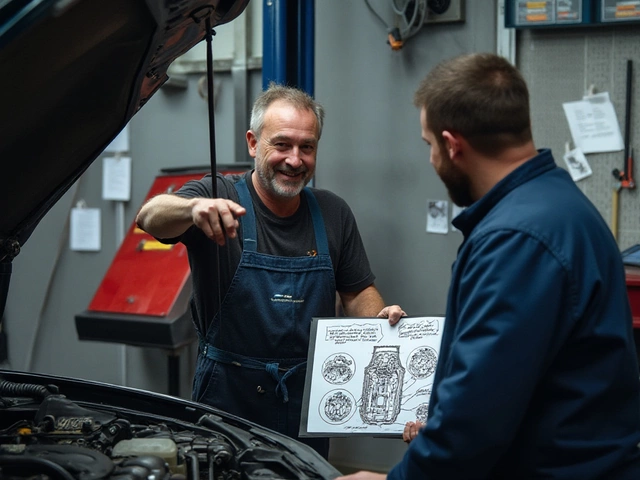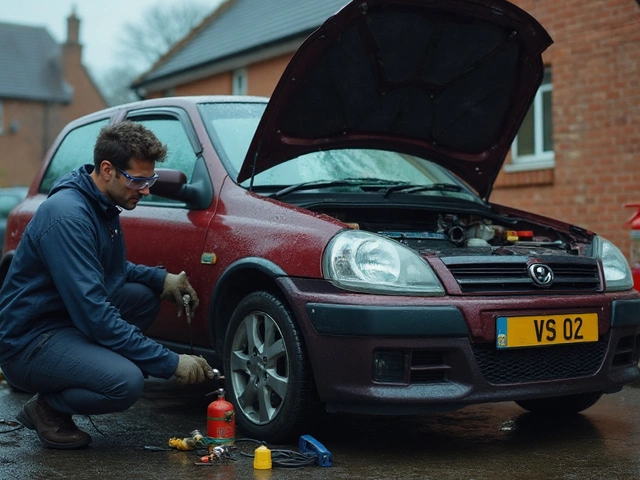Picture this: you’re cruising down the highway, and suddenly your engine stutters for no obvious reason. It’s easy to blame bad gas or a clogged filter, but sometimes the real troublemaker is hiding deeper—your fuel pump. If you’ve never thought much about it, you’re not alone. A lot of drivers go years without giving it a second thought, until their car leaves them stranded.
The fuel pump’s job is straightforward: send the right amount of fuel from your tank to the engine. When it starts failing, the signs can be surprisingly clear—as long as you know what to look for. Stuff like sputtering at high speed, rough idling, sudden stalls, or a car that just won’t start after a short drive can all point in the same direction. The sneaky part? These symptoms often come and go, fooling you into thinking the problem fixed itself.
Ignoring these red flags can cost you big, both in cash and wasted time. Knowing the early signs and checking a few basics yourself can keep your car running—and keep you out of the repair shop for as long as possible.
- Warning Signs Your Fuel Pump Is Dying
- Simple At-Home Tests
- When to Replace (and Not Just Repair)
- Tips to Keep Your Fuel Pump Healthy
Warning Signs Your Fuel Pump Is Dying
Most folks don’t even think about their fuel pump—until the car acts up. Thing is, a failing pump can turn a quick drive into a huge headache. Here’s how it tries to get your attention before it finally quits.
- Random Engine Sputters. Out of nowhere, your engine stumbles or coughs, mostly when you’re going fast. This is classic for a worn pump that can’t keep up with demand.
- Trouble Starting Up. You twist the key, and it just cranks and cranks—or starts after a long wait. Sometimes it’ll fire up, but other times you’re out of luck.
- Stalling, Especially at High Temps. A hot engine can make a weak pump act up more. Ever stall right after a long drive? That’s no coincidence.
- Sudden Loss of Power. When you ask your car for a burst of speed (like merging onto the highway), does it bog down or almost stall? That’s a big clue you’ve got a fuel delivery problem.
- Loud Whining Noise from the Tank. All fuel pumps make some noise, but if it turns into a constant, high-pitched whine, that’s usually a sign of trouble.
To give you a better idea, check out this quick table summarizing the most common warning signs and how often they show up according to driver reports over the last five years (based on data from a major US auto repair network):
| Warning Sign | Reported Frequency (%) |
|---|---|
| Hard Starting | 41 |
| Engine Sputter at High Speed | 28 |
| Loss of Power on Acceleration | 19 |
| Loud Whining from Tank | 7 |
| Random Stalling | 5 |
Keep an eye (and ear) out for these. If your car’s showing one or more of these signs, a fuel pump issue could be around the corner. Catching it early might save you from a tow or worse—the dreaded “no start” in the middle of nowhere.
Simple At-Home Tests
You don’t need a mechanic’s garage to check if your fuel pump is acting up. There are a few easy tricks you can try at home to spot a dying pump without any fancy equipment. Just remember: always work safely—if you’re dealing with fuel or electrical parts, keep a fire extinguisher nearby.
First, try the good old "listen test." When you turn your key to the "on" position (don’t start the car), you should hear a quiet hum or buzz coming from the fuel tank for about 2-3 seconds. That’s the pump priming. No sound? That’s a bad sign.
- Fuel pump relay check: Under your dashboard or hood (check your manual for your model), look for the relay and listen for a click when you turn the key. No click could mean a dead relay, which also stops your pump.
- Pressure test (DIY version): With your car parked, try to start the engine. If it cranks but won’t start, spray a little starting fluid or carb cleaner into the air intake and try again. If it fires up just for a moment, odds are your pump isn’t sending fuel up to the engine.
- Sputtering at higher speeds: Does your car act starved for power while accelerating or going uphill? Take note—this usually points to fuel delivery problems, and it’s more common with bad pumps than, say, a clogged air filter.
If you want numbers, here’s what the pros look for: most cars need 40–60 PSI of fuel pressure to run smoothly (check your manual to be sure). Some local auto parts shops rent out pressure gauges if you want to double-check.
| Test | What You Should Hear/See | What It Means If Not |
|---|---|---|
| Key-On Pump Noise | Soft buzzing for 2-3 sec | Pump may be bad or not powered |
| Relay Click | A single "click" at key-on | Relay issue—pump might not turn on |
| Pressure Hold | 40-60 PSI (most vehicles) | Low or no pressure = pump/line problem |
These checks don’t guarantee 100% answers, but they can rule out other simple causes. If things look suspicious at this point, you’re probably ready for a new pump—or at least a professional diagnosis.

When to Replace (and Not Just Repair)
Here’s something that car owners often get stuck on: can you just fix a bad fuel pump, or is it time to swap it out for a new one? The reality is, most modern fuel pumps aren’t made to be patched up. Once they start failing, you’re usually better off going for a full replacement instead of chasing a temporary fix.
With electric pumps—pretty much all cars use these now—common problems like weak pressure or random stalling mean the key internal parts are wearing out. Replacing only the filter or messing with wiring usually won’t cut it, especially if your car is struggling to start or keeps stalling while driving. If you hear a whining noise from the gas tank or your car suddenly loses power under load, it’s a strong sign the fuel pump itself is the culprit. Once the pump is toast, patch jobs almost never last and can leave you stranded when you least expect it.
There are some rare exceptions. Sometimes a clogged fuel filter or a blown relay triggers similar symptoms. If you’re lucky, replacing those parts will solve your problem. But if you’ve already checked or swapped those out and the issues keep coming back, don’t spend time and money chasing a miracle. Stick with these points to decide if replacement is the smart move:
- Your car repeatedly stalls or won’t start, even after changing the fuel filter.
- You hear weird whining or humming sounds from the fuel tank area.
- Power drops or the engine sputters under acceleration.
- Fuel pressure tests show weak or inconsistent pressure at the rail.
One last money-saving tip: always double-check the warranty on your car or aftermarket pump. Some brands offer extra-long coverage, and you don’t want to pay out of pocket if you don’t have to. Bottom line—if the pump itself is the problem, replacement is the surest fix, not a band-aid repair.
Tips to Keep Your Fuel Pump Healthy
Most folks don’t think about maintaining their fuel pump until it gives up, but a little care goes a long way. Good news: You don’t need to be a mechanic or buy any fancy tools to help your fuel pump last longer.
- Don't Drive on Empty: Running your car on a nearly empty tank heats up the pump and lets dirt from the bottom of the tank get sucked in. Try to keep your tank above a quarter full. This step alone can add years to your pump's life.
- Change Your Fuel Filter: Your fuel filter actually does most of the dirty work, catching debris before it hits the pump. If this gets clogged, the pump strains to push fuel through. Most car manuals suggest changing it every 20,000 to 40,000 miles.
- Buy Good Fuel: Cheap, low-quality gas sometimes comes with water or grit that can mess up your pump over time. Fill up at high-traffic gas stations where the tanks cycle fuel more often because fresher fuel usually equals cleaner fuel.
- Pay Attention to Signs: If you notice whining noises from the gas tank or your car struggling to start, don’t just crank the engine harder. These are your fuel pump's way of telling you something’s wrong. Get it checked before a minor issue sends you to the tow truck.
- Avoid Overheating: If possible, don’t drive for hours on a boiling hot day with a quarter tank or less. The temperature inside the gas tank helps cool the pump, so less fuel means more heat exposure.
Want to see what kind of mileage a fuel pump can usually handle? This table shows the average lifespan so you have a ballpark idea:
| Fuel Pump Type | Average Lifespan (Miles) |
|---|---|
| Electric (Most Modern Cars) | 100,000 - 150,000 |
| Mechanical (Older Vehicles) | 60,000 - 100,000 |
Finally, if you ever splash a bunch of fuel on yourself during fill-ups or have a gas cap that’s loose or missing, fix it. Air or dirt getting into your tank is bad news for both your fuel pump and your wallet.


